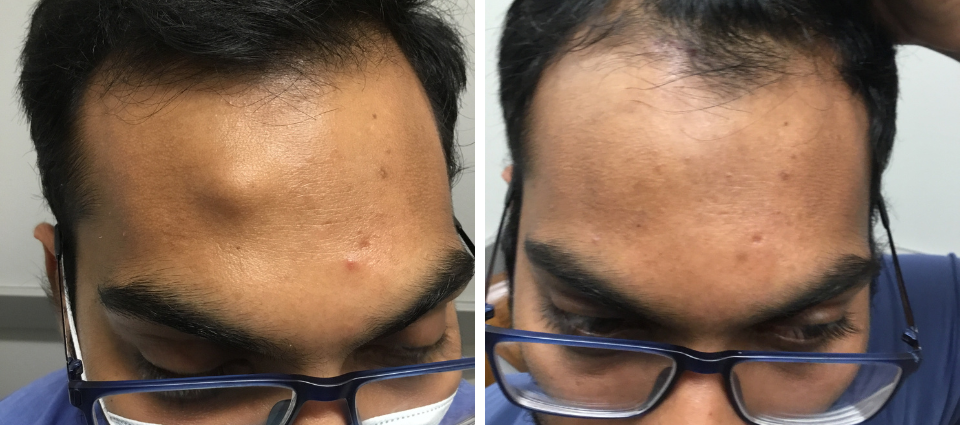Osteoma Removal in Brampton
What You Need to Know about Osteoma Removal
An osteoma is a benign bone tumor that typically forms on the skull in the form of a small, hard mass of bone and tissue. Most benign osteomas are asymptomatic and are typically diagnosed through a CT scan. Osteomas are formed when cells divide uncountably. They can be caused by an injury, but no other cause has been identified for the development of osteomas although scientific theories suggest genetics and trauma are possible causes. They are not cancerous, but they can sometimes cause problems with hearing or vision, sinus infections, and headaches. Once removed, osteomas do not typically return.
| The Ideal Candidate | Treatment for osteoma is only necessary if the patient has symptoms or disfigurement. Forehead, arm, and leg osteoma removals are performed under local anaesthetic. |
| Target Areas | Often osteomas occur on the forehead, arm, and leg. |
| Average Cost | The fee for this procedure ranges from $2700-$6000 + HST. |
| The Ideal Candidate |
| Treatment for osteoma is only necessary if the patient has symptoms or disfigurement. Forehead, arm, and leg osteoma removals are performed under local anaesthetic. |
| Target Areas |
| Often osteomas occur on the forehead, arm, and leg. |
| Average Cost |
| The fee for this procedure starts at $2700 + HST. |
The Treatment Process
You will need a diagnosis by a doctor and/or a CT scan before the procedure can take place. This minor procedure does not require pre-op preparation.
An incision is placed directly above the osteoma or behind the hairline for osteomas within the forehead or scalp. The surgeon will then dissect and “shave down” the bony bump of the osteoma, and carefully close the surgical incision for the best cosmetic outcome. Osteoma excision surgery requires minimal downtime and does not usually cause much discomfort. Osteomas do not typically get infected, drain, or contribute to skin changes within the overlying skin. Forehead swelling is expected to occur but will subside within 24-72 hours. Compression for 12 hours reduces post-surgical swelling. Elevation of the head and an icepack will also help to reduce swelling. The sutures will be removed in the office at 1 week.
Book a consultation with one of our experienced technicians!
Resources

Cost vs. Quality: The Importance of Researching Co...

Cosmetic Surgery vs. Plastic Surgery: What’s the...




